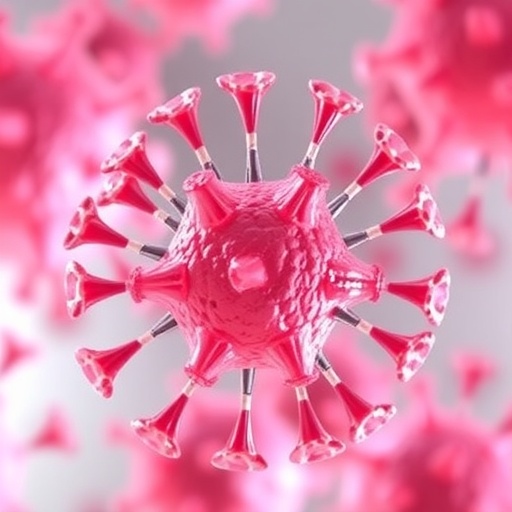The growing threat of multidrug-resistant (MDR) gram-positive bacteria represents a significant challenge in modern medicine. Specifically, pathogens like methicillin-resistant Staphylococcus aureus (MRSA) and linezolid-resistant Enterococcus faecalis have developed formidable resistance mechanisms, rendering conventional antibiotics largely ineffective. These urgent clinical needs have prompted researchers to urgently seek new antibacterial agents that can target the underlying pathways of resistance. In this context, a novel compound known as BB-Cl-Amidine has emerged as a promising candidate, yet its potential as an antimicrobial agent had not been previously explored until now.
BB-Cl-Amidine was initially developed as a peptidyl arginine deiminase inhibitor, primarily for other therapeutic applications. However, recent investigations have started to shed light on its antibacterial properties. Researchers undertook a comprehensive study to evaluate the antibacterial effectiveness of this compound against a range of MDR gram-positive pathogens, revealing compelling data that could pivot the focus of future antibacterial development.
The results from these investigations are indeed striking. The study found that BB-Cl-Amidine displayed potent antibacterial activity against various clinical isolates of gram-positive bacteria, with minimum inhibitory concentration (MIC) values falling between 25 μM and 50 μM. This level of effectiveness represents a significant achievement, particularly in the context of MRSA and E. faecalis, both notorious for their resistance to standard antibiotics. Such findings could illuminate a new pathway for addressing the complications arising from these resistant infections, marking an important step forward in the fight against such bacteria.
More than just inhibiting growth, BB-Cl-Amidine exhibited remarkable properties in disrupting the formation of biofilms—a critical factor contributing to bacterial resilience. The study reported that at sub-MIC concentrations, BB-Cl-Amidine significantly inhibited biofilm formation in both S. aureus and E. faecalis. Biofilms are clusters of bacteria encased in a protective matrix, making them much harder to eradicate with traditional antimicrobial treatments. The ability to disrupt biofilm formation opens new therapeutic avenues and enhances the potential utility of BB-Cl-Amidine in clinical settings.
Further investigation into the mechanisms at play revealed that BB-Cl-Amidine leads to increased permeability and depolarization of the membrane potential in S. aureus. Membrane integrity is vital for bacterial survival, and compromising it can result in cell death. By targeting the bacterial membrane structure, BB-Cl-Amidine effectively disrupts this critical barrier. These findings elucidate one of the key mechanisms through which the compound exerts its antibacterial effects.
To better understand the interactions between BB-Cl-Amidine and bacterial cells, the study explored the role of certain phospholipids. The antibacterial activity of BB-Cl-Amidine was notably neutralized by cardiolipin (CL) and phosphatidylglycerol (PG), two important components of bacterial membranes. This interaction indicates that BB-Cl-Amidine may specifically target the membrane phospholipids, elucidating a crucial aspect of its mechanism of action.
The exposure of bacterial pathogens to BB-Cl-Amidine also resulted in the abnormal expression of numerous functional proteins associated with the cell membrane and phospholipid metabolism. This suggests that not only does BB-Cl-Amidine disrupt the membrane, but it may also cause systemic changes in protein synthesis and function within the bacterial cell. Such changes can significantly impede the bacteria’s ability to mount a defense against the compound and could pave the way for synergistic effects when used in combination with existing antibiotics.
These findings underscore the potential importance of BB-Cl-Amidine as an antimicrobial agent that is not only effective against existing resistant strains but one that also operates through novel mechanisms of action. Given the alarming rise in antibiotic resistance, innovations such as BB-Cl-Amidine are urgently needed to replenish our arsenal against bacterial infections.
The implications of this research extend beyond laboratory findings. If successful in clinical trials, BB-Cl-Amidine could transform infection management strategies, especially in hospital settings where MDR pathogens pose the greatest threat. The prospects for BB-Cl-Amidine highlight the necessity of continuous research and investment in alternative therapeutic agents that can confront resistance patterns head-on.
As the medical community remains vigilant against the spread of antibiotic-resistant bacteria, investigations such as these provide hope for new therapeutic approaches. Ultimately, the path forward in combating MDR gram-positive infections will depend on our ability to innovate and adapt, harnessing new discoveries such as those surrounding BB-Cl-Amidine to address one of the most pressing challenges in infectious disease.
In summary, the investigation into BB-Cl-Amidine demonstrates that this compound not only possesses effective antibacterial properties against several strains of MDR gram-positive bacteria but potentially alters the landscape of how we understand and treat such infections. The merit of examining such compounds lies in their ability to shift therapeutic paradigms, proving once again that in the realm of antimicrobial resistance, the key to progress often lies in the most unexpected places.
Subject of Research: BB-Cl-Amidine as an antimicrobial agent against multidrug-resistant gram-positive bacteria.
Article Title: Antibacterial effects of BB-Cl-Amidine against multidrug-resistant Gram-positive pathogens via membrane disruption.
Article References:
Wang, Z., Ma, J., Lin, J. et al. Antibacterial effects of BB-Cl-Amidine against multidrug-resistant Gram-positive pathogens via membrane disruption.
J Antibiot (2025). https://doi.org/10.1038/s41429-025-00869-w
Image Credits: AI Generated
DOI: https://doi.org/10.1038/s41429-025-00869-w
Keywords: BB-Cl-Amidine, multidrug-resistant bacteria, antibacterial activity, S. aureus, E. faecalis, biofilm disruption, membrane potential disruption, antibiotic resistance.




